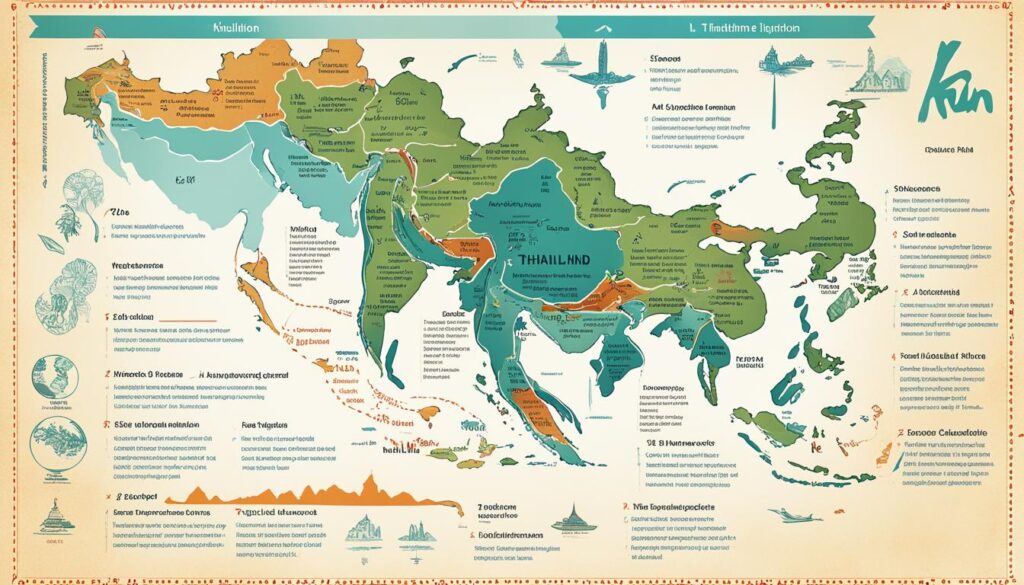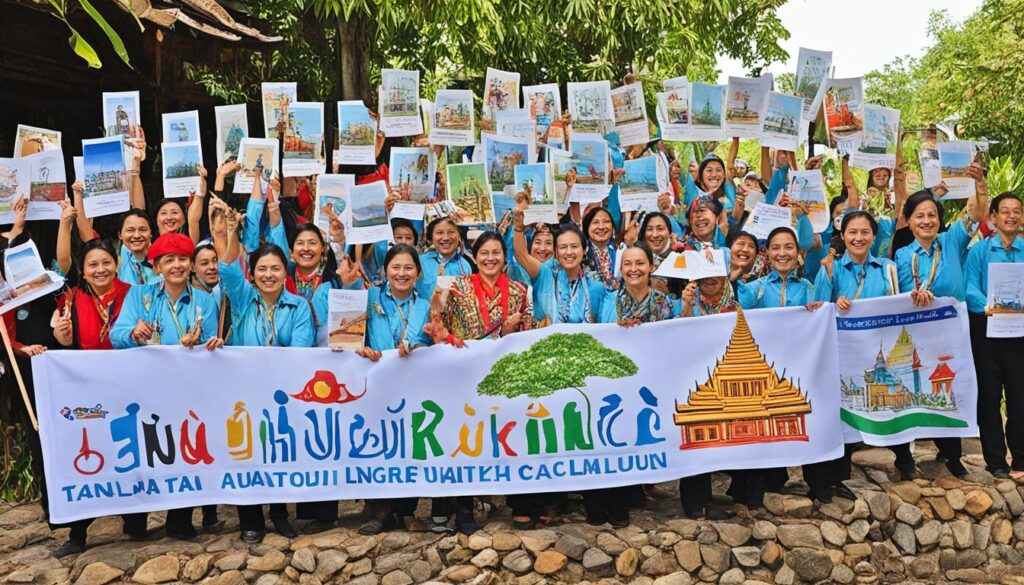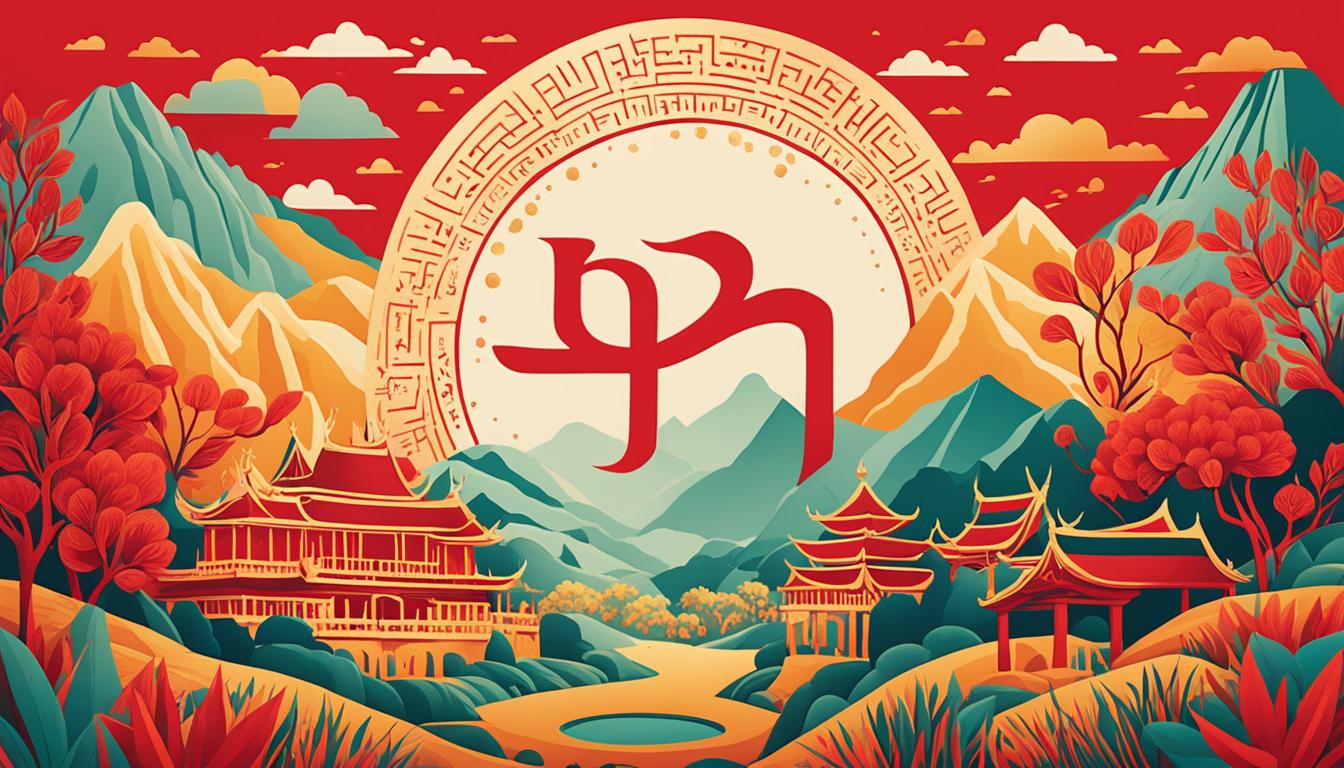Did you know that the Khün language, spoken by the Tai Khün people, is part of the rich cultural heritage of Thailand? This surprising fact highlights the importance of the Khün language, its unique linguistic features, and the efforts being made to preserve it. From its history and origins to its role in contemporary society, this article explores the fascinating world of the Khün language and its significance to the Khün tribe and their culture.
The Tai Khün People
The Tai Khün people are an ethnic group primarily residing in Kengtung, Shan State, Myanmar. They have a rich cultural heritage that includes their language, traditional customs, and practices. The Khün people have a strong connection to the land and nature, and their culture plays an integral role in their daily lives. They have a strong sense of community and value the preservation of their traditions and language.
Traditional Khün Customs and Practices
The Khün people have a unique set of customs and practices that are passed down through generations. These traditions encompass various aspects of their lives, including social interactions, ceremonies, and festivities. One significant tradition is the Khün wedding ceremony, which involves intricate rituals and symbolizes the union of two families. Other customs include traditional music and dance performances, as well as various religious practices that reflect the spiritual beliefs of the community.
Khün Culture and Community
The Khün culture places great importance on community and social cohesion. The Khün people have a close-knit society that revolves around collective decision-making and support for one another. They engage in communal activities such as farming, weaving, and craftsmanship, which not only sustain their livelihoods but also foster a sense of belonging and unity. The Khün community actively participates in cultural events and festivals, showcasing their vibrant traditions and promoting cultural exchange.
“Our culture defines who we are as Khün people. It is our responsibility to pass on our customs, language, and heritage to future generations.”
| Elements of Khün Culture | Impacts on Society |
|---|---|
| Language | Preserves the unique identity of the Khün people and strengthens intergenerational bonds. |
| Traditional Arts | Preserves artistic skills and promotes cultural heritage. |
| Community Festivals | Strengthens community ties and fosters a sense of belonging. |
| Religious Practices | Provides spiritual guidance and sustains cultural traditions. |
History and Origins of the Khün Language
The Khün language has a long and intriguing history that can be traced back to ancient times. Belonging to the Tai-Kadai language family, specifically the southwestern Tai branch, the Khün language has evolved and adapted over centuries of interaction with neighboring languages.
Origins Experts believe that the Khün language emerged from the ancestors of the Tai Khün people, who migrated to the Kengtung region in Myanmar and established their vibrant culture and society. As part of the Tai-Kadai language family, the Khün language shares linguistic ties with other Tai languages, such as Thai, Lao, and Shan.
Influences Throughout its history, the Khün language has been influenced by the languages of the surrounding regions. Being geographically close to Thailand and Laos, the Khün language has absorbed elements from these languages over time. The cultural exchanges and interactions with neighboring communities have enriched the Khün language, contributing to its linguistic diversity and uniqueness.
Cultural Significance The Khün language holds immense cultural significance for the Tai Khün people. It serves as a vital link to their heritage, traditions, and shared history. The language acts as a medium through which the community expresses its identity and connects with its roots. Understanding the history and origins of the Khün language is crucial for appreciating the language’s broader cultural and social context.
“The Khün language embodies the traditions, values, and stories of the Tai Khün people, reflecting their vibrant cultural identity.”
Influences on the Khün Language
Throughout its development, the Khün language has undergone significant transformations, driven by interactions with neighboring languages and cultural influences. The Thai, Lao, and Shan languages have played a particularly significant role in shaping the Khün language, leaving lasting imprints on its vocabulary, grammar, and phonetics.
Language Evolution and Adaptation
The Khün language has adapted and evolved alongside the Tai Khün people, reflecting changes in their society and cultural practices. As the Tai Khün people migrated and established communities in different regions, the Khün language assimilated elements from the local languages, resulting in unique dialects and variations.

The image above visually represents the history and evolution of the Khün language, showcasing the shifts and adaptations that have occurred over time.
| Era | Key Developments |
|---|---|
| Ancient Times | Emergence of the Khün language within the Tai-Kadai language family. |
| Medieval Period | Influences from Thai, Lao, and Shan languages shape the Khün language. |
| Modern Era | Adaptation and evolution of the Khün language alongside the Tai Khün people. |
Table: Key Developments in the History of the Khün Language
Linguistic Features of the Khün Language
The Khün language, spoken by the Tai Khün people, exhibits several unique and distinct linguistic features that differentiate it from other Tai languages. These features contribute to the richness and complexity of the language, making it an important part of the Khün culture and heritage. Let’s explore some of these fascinating linguistic characteristics:
Phonology
The Khün language has its own distinct set of consonant and vowel sounds, which are different from those found in other Tai languages. These phonetic variations contribute to the unique identity of the Khün language and facilitate clear pronunciation among its speakers.
Tonal System
One of the noteworthy aspects of the Khün language is its complex tonal system. Khün features five to six contrastive tones, each with a different pitch contour, which conveys distinct meanings. The tones play a crucial role in distinguishing words and grammatical structures within the language.
Writing System
The Khün language is written using its own script, known as the Tai Tham script. This writing system is based on ancient Brahmic scripts and has been adapted to represent the unique phonetic features of the Khün language. The script encompasses a variety of characters that symbolize different sounds and syllables.
Together, these linguistic features contribute to the beauty and complexity of the Khün language. To get a deeper understanding of these features, please refer to the table below:
| Linguistic Feature | Description |
|---|---|
| Phonology | The Khün language has distinct consonant and vowel sounds that differentiate it from other Tai languages. |
| Tonal System | Khün has a complex tonal system with five to six contrastive tones, each conveying different meanings. |
| Writing System | The Khün language uses the Tai Tham script, a writing system adapted to represent its unique phonetic features. |
As you can see, the linguistic features of the Khün language contribute significantly to its distinctiveness and cultural significance. These features not only facilitate effective communication within the Khün community but also showcase the linguistic diversity found within the Tai language family.
Efforts to Preserve the Khün Language
The preservation of the Khün language is of utmost importance to the Tai Khün people. They have actively dedicated their efforts to safeguarding and promoting this unique linguistic heritage. Community organizations and cultural institutions play a vital role in documenting and recording the Khün language, while also providing essential resources for language learning and education.
In addition to documentation, efforts are being made to revitalize the use of the Khün language in everyday life. Cultural events serve as a platform for showcasing and celebrating the language, fostering a sense of pride and identity among the community. Language immersion programs offer an immersive learning experience, enabling individuals to develop their proficiency in speaking and understanding Khün.
“Preserving the Khün language is not just about language itself; it is about preserving our culture, identity, and roots.”
Furthermore, the creation of digital resources has increased accessibility to the Khün language. These resources include online dictionaries, language learning apps, and digital libraries that house written materials and audio recordings. These digital platforms enable individuals, both within and outside the community, to explore and deepen their understanding of the Khün language.
The Tai Khün people’s unwavering dedication to language preservation ensures that future generations have the opportunity to connect with their cultural heritage and maintain a strong sense of identity. By actively engaging in these efforts, the community demonstrates their commitment to the vitality and longevity of the Khün language.

| Efforts to Preserve the Khün Language | Key Initiatives |
|---|---|
| Community Organizations and Cultural Institutions | Establishment of organizations to document and record the Khün language, provision of language learning resources |
| Cultural Events | Celebration of the Khün language through festivals, performances, and cultural exhibitions |
| Language Immersion Programs | Immersive learning experiences to enhance proficiency in speaking and understanding Khün |
| Digital Resources | Online dictionaries, language learning apps, and digital libraries for wider accessibility |
Khün Language Resources
If you’re interested in delving deeper into the Khün language, there are a variety of resources available to support your learning journey. These resources provide comprehensive insights into the unique linguistic features and cultural significance of the Khün language.
Here are some valuable Khün language resources:
“Language is the road map of a culture. It tells you where its people come from and where they are going.” – Rita Mae Brown
Books and Dictionaries
A wide range of books and dictionaries dedicated to the Khün language can provide you with a solid foundation. These resources offer comprehensive explanations of vocabulary, grammar, and pronunciation, enabling you to deepen your understanding of the language. Some notable books and dictionaries include:
| Resource | Description |
|---|---|
| Khün Language Dictionary | A comprehensive dictionary that provides definitions in Khün and English, helping you expand your vocabulary. |
| Khün Grammar Guide | A detailed guide that explores the grammar rules and structures of the Khün language. |
| Khün-English Phrasebook | A practical resource that offers commonly used phrases and expressions in both Khün and English. |
Online Resources and Digital Libraries
The internet has opened up a world of Khün language resources that are easily accessible. Online resources and digital libraries provide a wealth of information, including audio recordings, written materials, and interactive exercises. These resources offer a dynamic and engaging learning experience. Some notable online platforms include:
- Khün Language Learning Website: This website provides audio recordings of native speakers, vocabulary exercises, and cultural insights.
- Digital Library of Khün Literature: Explore a curated collection of Khün literature, including poems, short stories, and folktales.
- Khün Language App: Download the Khün language app for convenient access to vocabulary, grammar exercises, and interactive lessons.
Language Revitalization Organizations
To foster language revitalization and community support, several organizations offer workshops and classes focused on the Khün language. These initiatives provide opportunities for language enthusiasts to connect, practice conversational skills, and participate in cultural events.
Here are some prominent Khün language revitalization organizations:
- The Khün Language Society: This organization offers language classes, workshops, and cultural immersion programs to promote the preservation of the Khün language.
- The Khün Cultural Heritage Center: A community-driven center that hosts events, exhibitions, and educational programs centered around the Khün language and culture.
By utilizing these Khün language resources, you can embark on a fulfilling journey to explore the unique linguistic and cultural aspects of the Khün language.
Khün Language in Contemporary Society
Despite the challenges of globalization and cultural assimilation, the Khün language continues to thrive among the Tai Khün people in various communities. This language holds a significant place in their cultural identity and is an integral part of their daily communication, especially within family and community settings.
The Khün language serves as a strong bond that connects the Tai Khün people to their roots and heritage. It is through their language that they pass down traditional customs, stories, and values from one generation to another. The language embodies the essence of their cultural identity, helping to preserve and perpetuate their unique traditions.
Within the Tai Khün community, the Khün language is spoken with pride and passion. It is a means of preserving their heritage and maintaining a strong sense of belonging and unity. The language serves as a powerful tool for expressing emotions, discussing important matters, and fostering deeper connections among community members.
However, the increasing influence of mainstream languages and the preferences of the younger generation pose challenges to the long-term survival and vitality of the Khün language. The younger generation tends to be more exposed to dominant languages and may prioritize their use over the Khün language in certain contexts.
“The preservation of the Khün language is crucial to the cultural resilience and identity of the Tai Khün people. Efforts must be made to ensure its continued usage and transmission to future generations.”
To address these challenges, there is a need for concerted efforts to promote the Khün language within the community and beyond. Initiatives such as language revitalization programs, cultural events, and educational resources can play a key role in encouraging the use and preservation of the Khün language.
The Tai Khün people are actively engaging in language revitalization efforts by organizing language classes, workshops, and cultural festivals. These initiatives strive to instill a sense of pride and appreciation for the Khün language among the younger generation, encouraging its continuation as a living language.
Additionally, the development of digital resources and online platforms can provide greater accessibility to the Khün language, allowing individuals from across the world to learn and engage with this unique dialect.

Celebrating the Khün Language: A Vibrant Community
The Khün language is celebrated within the Tai Khün community through various cultural events and festivals. These occasions provide opportunities for storytelling, performing arts, and interactive language activities, showcasing the richness of the Khün dialect.
Language revitalization organizations and cultural institutions also play a vital role in preserving the Khün language. They collaborate with community members to document and compile resources, including dictionaries, grammar guides, and audio recordings. These valuable resources ensure the continued study and exploration of the Khün language by linguists, researchers, and enthusiasts.
By nurturing the Khün language and valuing its significance, the Tai Khün people continue to preserve their cultural heritage and maintain a strong sense of identity. The Khün language represents their unique voice, connecting them to their ancestors and uniting them as a vibrant community.
Conclusion
The Khün language holds immense significance for the Tai Khün people, serving as a vital link to their cultural heritage and identity. To ensure the preservation of this unique linguistic treasure, it is crucial to actively support and promote the Khün language.
Efforts must be made to document and record the language, providing valuable resources for future generations to learn and engage with Khün. Additionally, language education initiatives should be established to foster the growth and proficiency of the Khün language among the Tai Khün community.
By valuing and investing in the preservation of the Khün language, we can contribute to the overall preservation of Khün culture and empower the Tai Khün people. The richness and diversity of the Khün language serve as a testament to the resilience and vibrancy of this remarkable community.
FAQ
What is the Khün Language?
The Khün language is spoken by the Tai Khün people of Kengtung, Shan State in Myanmar, as well as in Chiang Rai Province, Thailand, and Yunnan Province, China. It is closely related to other Tai languages such as Thai and Lao and is an important part of the Khün culture and heritage.
Who are the Tai Khün people?
The Tai Khün people are an ethnic group primarily residing in Kengtung, Shan State, Myanmar. They have a rich cultural heritage that includes their language, traditional customs, and practices.
What is the history and origin of the Khün language?
The Khün language has a long history that dates back to ancient times. It is believed to have originated from the Tai-Kadai language family, specifically the southwestern Tai branch. Over the centuries, the Khün language has evolved and been influenced by other languages in the region, including Thai, Lao, and Shan.
What are the linguistic features of the Khün language?
The Khün language has several distinct linguistic features that set it apart from other Tai languages. It has unique phonology, including distinct consonant and vowel sounds. The language has a complex tonal system, with five or six contrastive tones. In addition, Khün has its own writing system, which is based on the Tai Tham script.
What efforts are being made to preserve the Khün language?
Recognizing the importance of preserving their language, the Tai Khün people have been actively involved in efforts to safeguard and promote the Khün language. Community organizations and cultural institutions have been established to document and record the language, as well as provide resources for language learning and education.
What resources are available for learning the Khün language?
There are various resources available for individuals interested in learning more about the Khün language. These include books, dictionaries, and language learning materials that provide a comprehensive understanding of the language. Online resources such as websites and digital libraries offer access to Khün language resources, including audio recordings and written materials.
Is the Khün language still spoken in contemporary society?
Yes, the Khün language continues to be spoken by the Tai Khün people in various communities. It holds a significant place in their cultural identity and is used in daily communication, especially within family and community settings.
Why is it important to preserve the Khün language?
The Khün language is an integral part of the Tai Khün people’s cultural heritage and identity. Efforts to preserve and promote the language are crucial to maintain the rich linguistic and cultural diversity of the region.
